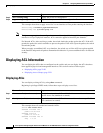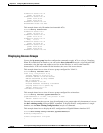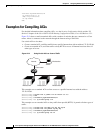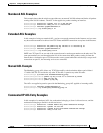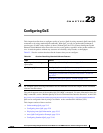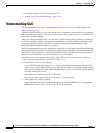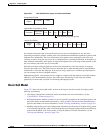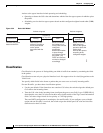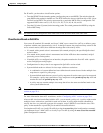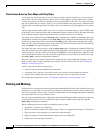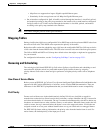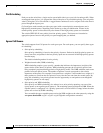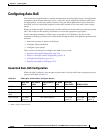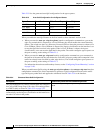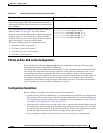
23-4
Cisco Systems Intelligent Gigabit Ethernet Switch Modules for the IBM BladeCenter, Software Configuration Guide
24R9746
Chapter 23 Configuring QoS
Understanding QoS
Actions at the egress interface include queueing and scheduling:
• Queueing evaluates the CoS value and determines which of the four egress queues in which to place
the packet.
• Scheduling services the four egress queues based on their configured weighted round robin (WRR)
weights.
Figure 23-2 Basic QoS Model
Classification
Classification is the process of distinguishing one kind of traffic from another by examining the fields
in the packet.
Classification occurs only on a physical interface basis. No support exists for classifying packets at the
VLAN level.
You specify which fields in the frame or packet that you want to use to classify incoming traffic.
For non-IP traffic, you have these classification options:
• Use the port default. If the frame does not contain a CoS value, the switch assigns the default port
CoS value to the incoming frame.
• Trust the CoS value in the incoming frame (configure the port to trust CoS). Layer 2 IEEE 802.1Q
frame headers carry the CoS value in the three most-significant bits of the Tag Control Information
field. CoS values range from 0 for low priority to 7 for high priority.
The trust DSCP configuration is meaningless for non-IP traffic. If you configure a port with this
option and non-IP traffic is received, the switch assigns the default port CoS value and classifies
traffic based on the CoS value.
60979
Classification Policing
Actions at ingress Actions at egress
Mark
In profile or
out of profile
Classifies the packet
based on the ACL.
Determines if the
packet is in profile or
out of profile based
on the policer
associated with the
filter.
Based on whether
the packet is in or
out of profile and the
configured
parameters,
determines whether
to pass through,
mark down, or drop
the packet. The
DSCP and CoS are
marked or changed
accordingly.
Queuing and
scheduling
Based on the CoS,
determines into
which of the egress
queues to place the
packet, then
services the queues
according to the
configured weights.



